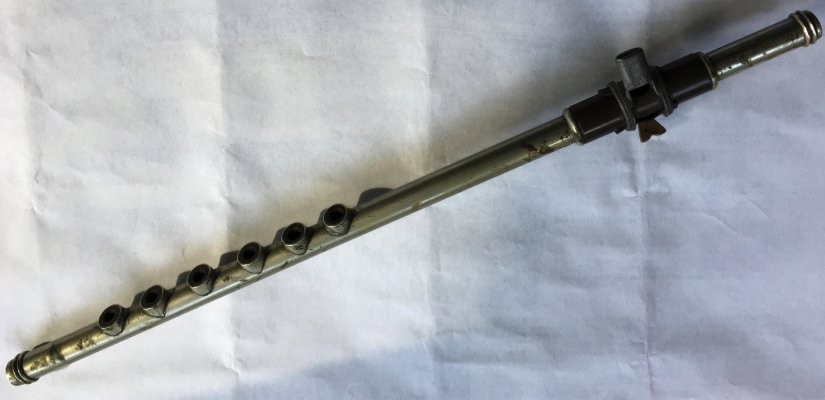Oddball question for the group (no snide remarks required).
DW has an old fife that has been in her family for generations, and the family history has it that it was used in the War of 1812 (a couple of ancestors served in that).
I seriously doubt it's that old, because as far as I can determine online, all the old fifes of that era were made of wood, and this appears to be mostly nickel-plated brass or some other metal. The section where the mouthpiece goes looks like plastic, but definitely isn't (we know it's much too old for that). Most likely ebony or something like it.
Careful examination with a magnifying glass reveals no markings of any kind, beyond a lot of stains from normal wear and tear.
I know we have experts here on every subject under the sun, so if anyone has an idea or can point me towards a place where I can research this, it would be most appreciated.
Regardless of whether it has any value, it won't be sold since it's a family heirloom with an interesting (and possibly somewhat true) story.
DW has an old fife that has been in her family for generations, and the family history has it that it was used in the War of 1812 (a couple of ancestors served in that).
I seriously doubt it's that old, because as far as I can determine online, all the old fifes of that era were made of wood, and this appears to be mostly nickel-plated brass or some other metal. The section where the mouthpiece goes looks like plastic, but definitely isn't (we know it's much too old for that). Most likely ebony or something like it.
Careful examination with a magnifying glass reveals no markings of any kind, beyond a lot of stains from normal wear and tear.
I know we have experts here on every subject under the sun, so if anyone has an idea or can point me towards a place where I can research this, it would be most appreciated.
Regardless of whether it has any value, it won't be sold since it's a family heirloom with an interesting (and possibly somewhat true) story.

